Freezing whole-kernel corn is a fantastic way to preserve this delicious and nutritious vegetable for use throughout the year. By freezing corn, you can enjoy the taste of summer long after the season has ended. It’s convenient, cost-effective, and ensures you always have corn ready to add to your favorite dishes.
Benefits of Freezing Whole Kernel Corn
Preservation of Nutrients
Freezing corn helps retain its vitamins and minerals, ensuring you get the maximum nutritional benefit. Unlike pressure canning corn, freezing does not significantly diminish the nutrient content, keeping the corn as healthy as the day you bought it.
Cost-Effectiveness
Buying corn in bulk during peak season is not only cheaper but also ensures you get the freshest product. By freezing it, you can take advantage of these lower prices and reduce food waste.
Convenience
Having pre-prepped, frozen corn on hand makes meal preparation quicker and easier. Whether you’re adding it to soups, stews, or salads, frozen corn is a versatile ingredient that saves time in the kitchen.
Selecting the Best Corn for Freezing
Choosing Fresh Corn
Select ears of corn that have bright green husks, moist silk, and plump kernels. Avoid ears with dry or brown husks, wilted silk, or missing kernels.
Seasonal Considerations
The best time to buy corn for freezing is during its peak season, typically from late summer to early fall. This is when corn is freshest, sweetest, and most affordable.
Prepping Corn for Freezing
Shucking
Remove the husks and silk from each ear of corn. This can be done by peeling back the husks and pulling off the silk strands. Rinse the ears under cold water to remove any remaining silk.
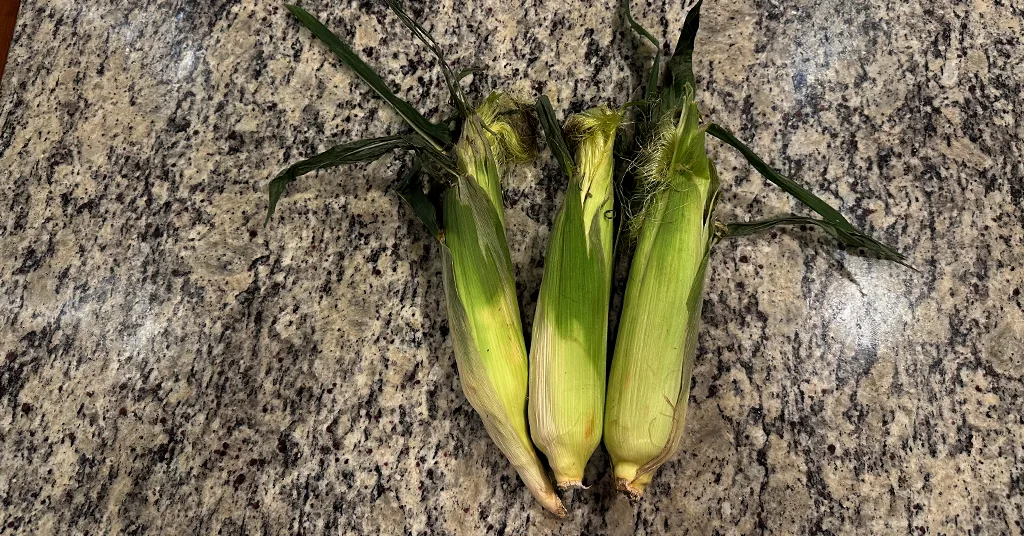
Washing
After shucking, wash the ears of corn thoroughly to remove any dirt or pesticides.
Blanching Corn
Why Blanching is Important
Blanching is crucial as it stops enzyme actions that can cause loss of flavor, color, and texture. It also helps to kill any bacteria and preserves the corn’s quality during freezing.
How to Blanch Corn
Boiling Method
- Bring a large pot of water to a boil.
- Add a few corn cobs to the boiling water.
- Boil for 4-6 minutes.
- Immediately transfer the corn to a bowl of ice water to stop the cooking process.
- Let the corn cool for about the same amount of time it was boiled.
- Drain the corn thoroughly.
Steam Method
- Bring a few inches of water to a boil in a large pot with a steamer basket.
- Add the corn cobs to the steamer basket.
- Cover and steam for 4-6 minutes.
- Transfer the corn to a bowl of ice water to cool.
- Drain the corn thoroughly.
Cooling and Drying Corn Kernels
Cooling Process
After blanching, quickly cool the corn cobs by placing them in ice water. This stops the cooking process and helps retain the corn’s vibrant color and crisp texture.
Drying Kernels
Ensure the corn cobs are thoroughly dried before freezing. Pat them dry with a clean towel or let them air dry on a baking sheet.
Cutting Kernels Off the Cob
To cut the kernels off the cob, use a sharp knife or a corn stripper. Hold the cob upright on a cutting board and slice downward, close to the cob, to remove the kernels.
To make this easier I have also used a bundt cake pan. This allows you to put the pointy end of the corn cob into the center hole of the bundt pan. The bundt pan will help keep the corn cob upright while you are cutting the kernels and it will collect the corn as it is falling off the cob.
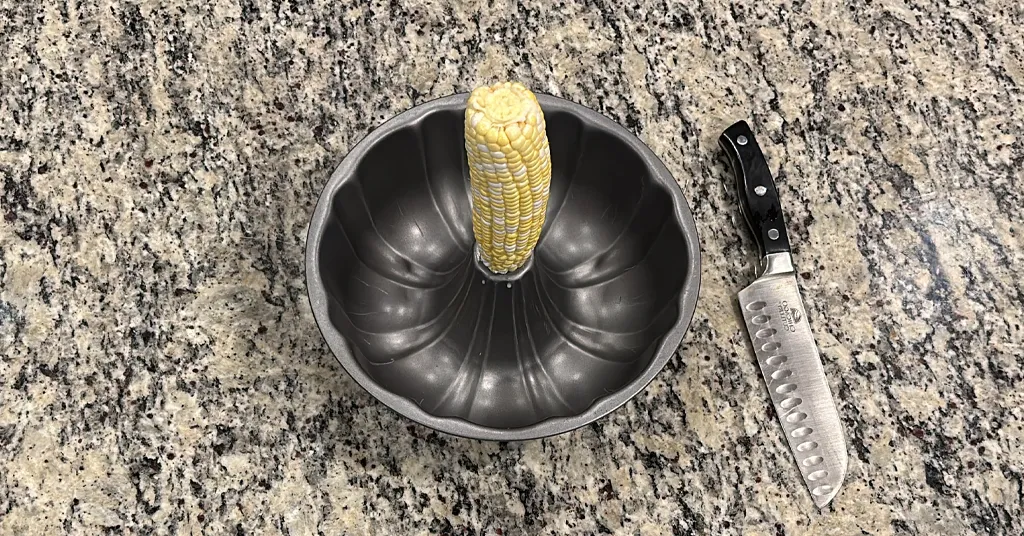
Flash Freezing Corn
Spread on a Tray
Spread the whole-kernel corn in a single layer on a baking sheet or tray. Ensure they are not touching each other to facilitate quick freezing.
Flash Freeze
Place the tray in the freezer. Flash-freeze the corn for a few hours or until they are individually frozen.
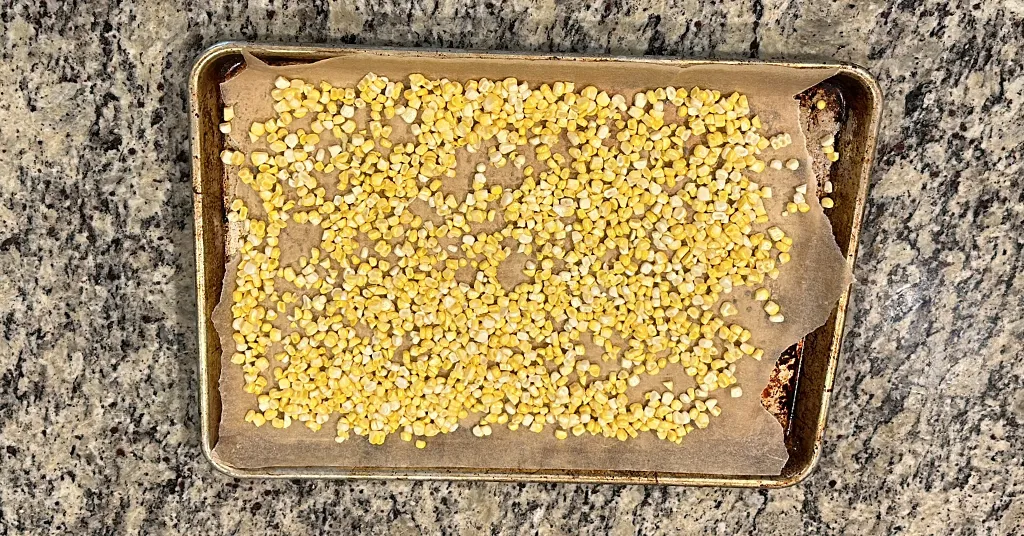
Packaging Corn for Freezing
Choosing the Right Containers
Use freezer-safe bags or containers to store the corn. Freezer bags are often preferred because they take up less space and are easy to stack.
Portioning
Divide the corn into portion sizes that you commonly use in recipes. This makes it easier to thaw only what you need.
Removing Air
Remove as much air as possible from the bags to prevent freezer burn. This can be done using a vacuum sealer or by pressing out the air with a straw before sealing.
Labeling and Storing Corn
Labeling Tips
Label each bag or container with the date and quantity. This helps keep track of how long the corn has been stored and ensures you use the oldest stock first.
Storage Tips when Freezing Corn
Store the corn in the coldest part of your freezer. Organize the bags or containers so they are easy to access and use within 8-12 months for the best quality.
How to Use Frozen Corn
Cooking Methods
Frozen corn can be used directly from the freezer. Add it to soups, stews, and casseroles, or sauté it as a side dish. It typically doesn’t require thawing before cooking.
Recipe Ideas
Troubleshooting Common Issues when Freezing Corn
Preventing Freezer Burn
Ensure the corn is completely dry before freezing and that all air is removed from the storage bags to prevent freezer burn.
Maintaining Texture and Flavor
Proper blanching, cooling, and drying are key to maintaining the corn’s texture and flavor during freezing and after thawing.
Frequently Asked Questions (FAQs)
Can you freeze corn without blanching?
While it is possible, blanching is recommended as it helps preserve the corn’s quality, texture, and flavor.
How long does frozen corn last?
Frozen corn can last 8-12 months in the freezer when properly stored.
Can you refreeze thawed corn?
It’s not recommended to refreeze thawed corn as it can affect the texture and flavor.
Freezing whole-kernel corn is an easy and effective way to enjoy fresh corn year-round. The process preserves the corn’s nutritional value and makes meal preparation convenient. Give it a try and experience the benefits of having this versatile ingredient readily available.
Recipe Card
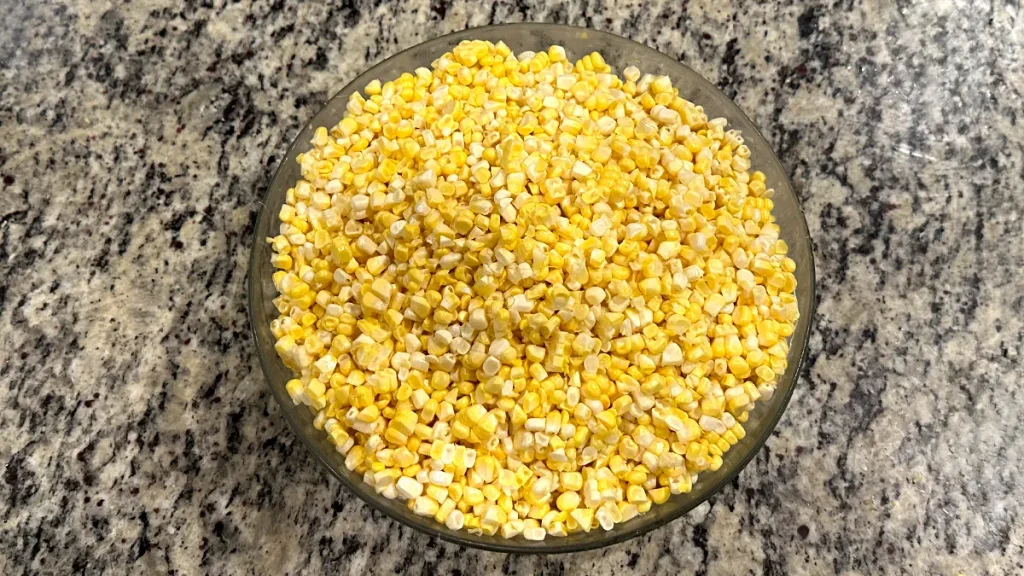
Freezing Whole Kernel Corn
Equipment
- Freezer
- Corn Cutter Optional
- Bundt Pan Optional
Ingredients
- Corn cut off the cob
Want to Save this Recipe?
Instructions
- Harvest or Purchase Fresh Corn on the Cob:Choose fresh and high-quality Corn on the Cob. Harvest from your garden or select corn from a reliable source.
- Clean Corn:Husk your corn cobs. Rinse the corn under cold water to remove any silk or debris.
- Blanching:Put several ears of corn into a gallon of boiling water. Blanching time starts when the water returns to a boil. Blanch the corn for 4 minutes. After you have completed the blanching process, chill corn thoroughly in iced water. Cool long enough for the cob to cool, but not so long as to become soggy. Drain the water off the cobs.
- Remove Corn from the Cob:Using your knife and cutting board, cut off the kernels to about two-thirds depth. You could use a corn cutter to remove the corn from the cob. To make this easier, I use a bundt cake pan and place the tip of the corn into the center hole. This allows the corn kernels to drop into the bundt pan and not spread all over the counter.
- Spread on a Tray:Spread the whole kernel corn in a single layer on a baking sheet or tray. Ensure they are not touching each other to facilitate quick freezing.
- Flash Freeze:Place the tray in the freezer. Flash-freeze the corn for a few hours or until they are individually frozen.
- Transfer to Storage Bags:Once the corn are individually frozen, transfer them to airtight freezer bags or containers. Remove excess air to prevent freezer burn.You can also vacuum seal them into specific portion sizes for easy use.
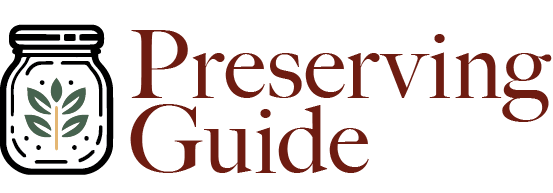

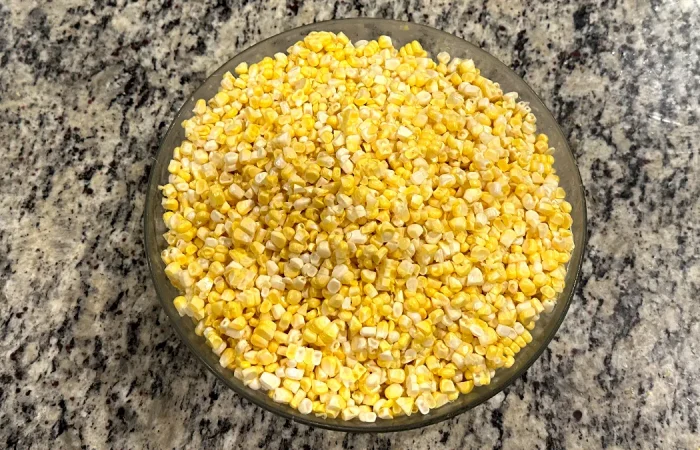
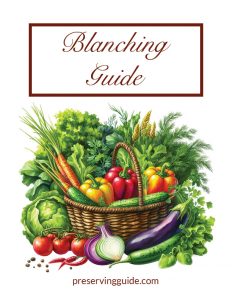

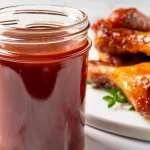
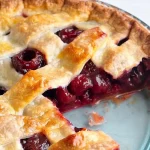
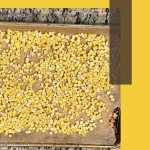
No Comment! Be the first one.